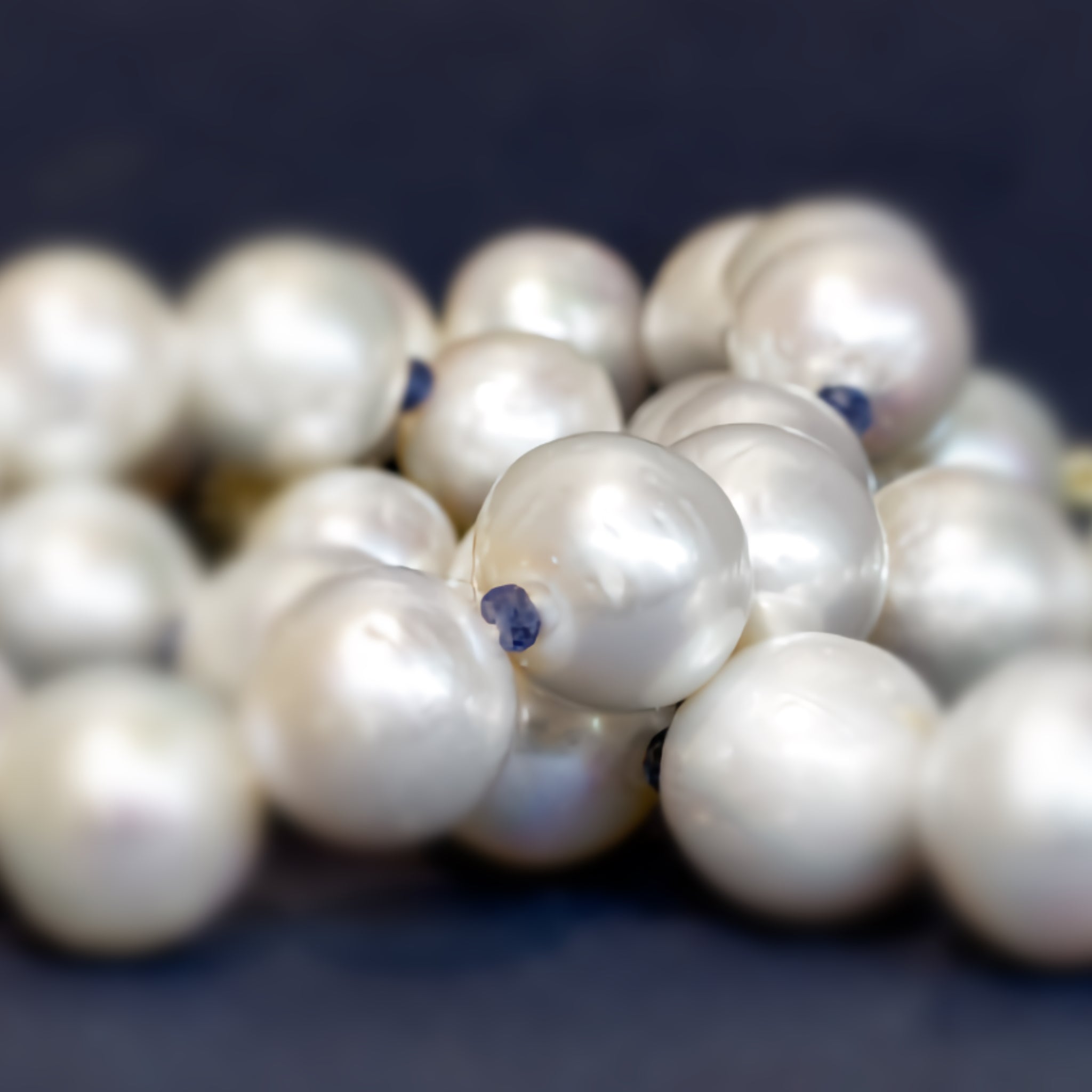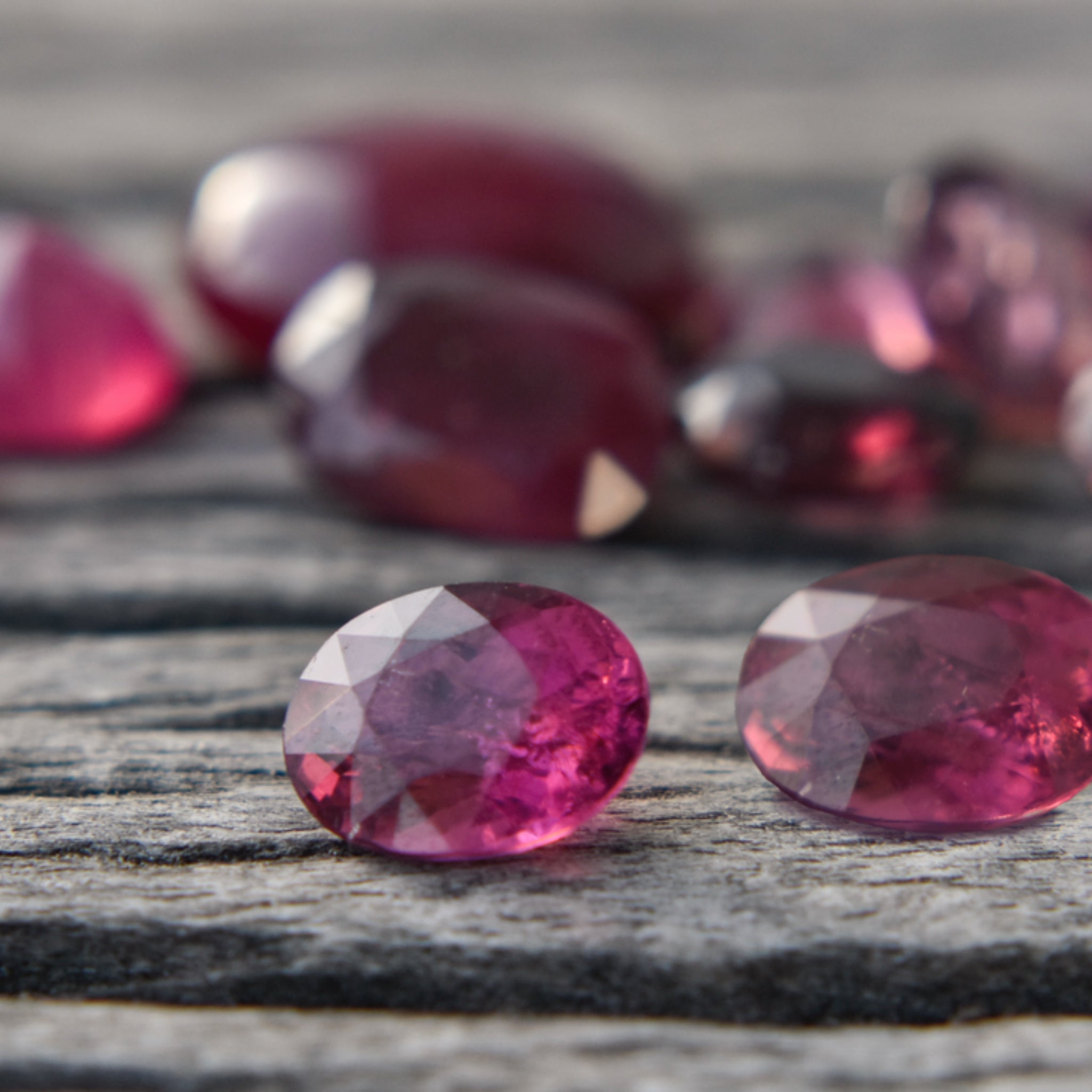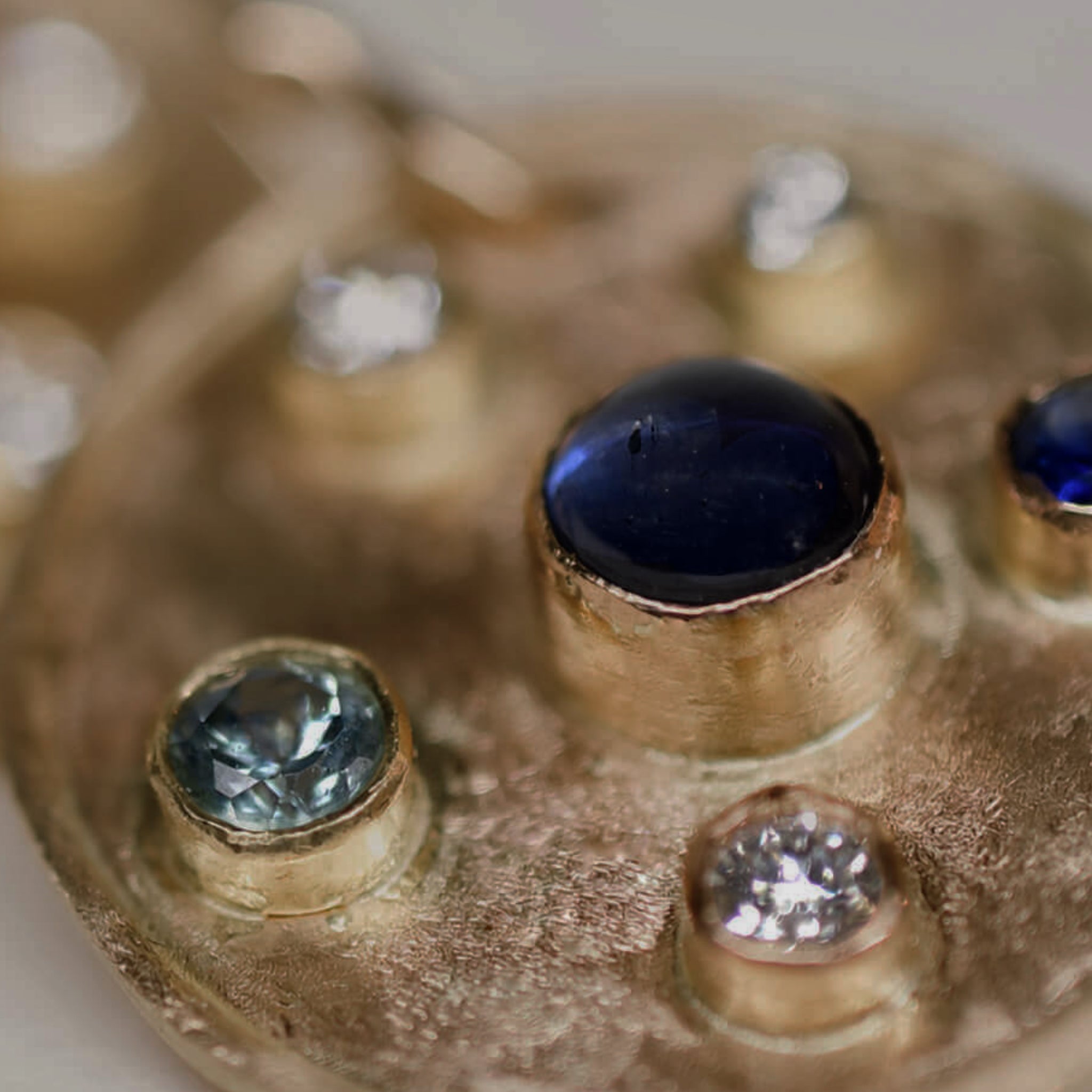
Sapphires to kick off Spring
After Nature perfected the solitary green hue with August's peridot, she went riotous for Spring (well at least in the Southern Hemisphere) with the gemstone sapphire by literally making it in every colour. Nature's rainbow gems summarise the September birthstone perfectly ranging from the famous blues to greens, yellows, oranges and pinks.
True red sapphires are actually rubies, worthy enough to have a separate name, month and category. You may well wonder, well what's the difference between a pink sapphire and a red ruby. Well that, is a tricky topic of its own and I am writing about it in my next newsletter.
Sapphires are tough and hard, second to diamond 9/10 on the Moh's hardness scale. They along with diamonds, rubies and emeralds comprise the original category of precious gemstones. They have their own hall at the Hong Kong Jewellery show where anybody with an unlimited wallet can buy surreal gems or interested observers like myself enjoy the drama of these out of the world transactions.
Besides jewellery, it has a tonne of industrial uses from sand paper & other abrasives, to sapphire glass on watches. Sapphires come from aluminum oxide (Corundum) rock and it is the trace elements that give sapphires (& rubies) their superb colours. I should mention that ruby and sapphire are from the same rock, both are Corundum mineral and it is the trace elements that make the difference as it whether it is a sapphire or ruby.

"While natural is gorgeous, heat treatment for sapphires has a history going back to ancient times"
Sapphires are renowned for their stunning array of natural colors, ranging from deep blue to vibrant pink, yellow, and even rare green hues. But has it always been this way? Colour treatment for sapphires is responsible for the lolly box colours including recent hot pinks and bright oranges that have not been seen previously due to advances in recent technology.
But before I hear screams of natural only, heat treatment for gemstones has been around for centuries. The practice of heat treating gemstones, including sapphires, can be traced back to ancient times. It is believed that the technique was first discovered in India, where sapphires were heated in order to improve their color. The process was later adopted by other cultures, including the Greeks and Romans, who valued the vibrant hues that heat treatment produced.
Over the centuries, the process of heat treating sapphires has evolved and become more sophisticated. In the 20th century, new techniques and technologies were developed to achieve even better results. Today, heat treatment is a widely accepted and common practice in the gemstone industry.

"Heat treatment is overall a benefit to the colour and clarity of a sapphire"
But are they still natural and acceptable? Well yes, as technically the gemstone is still corundum. The heat treatment of sapphires is detectable so there is not much point hiding it as any gem analysis will reveal it. In my ring above, it contains a unheated Ceylon blue sapphire with heat treated orange sapphires. At the Hong Kong Jewellery Show where I buy sapphires, experts pick this difference just by looking at it so you can observe their differences (at least in large stones) with the naked eye. Generally speaking, natural no-heat sapphires will have a softer luster and smoother surface appeal. Heated sapphires display a glass-like surface that feels hard and seem more unnatural upon comparison.
Heat treatment offers several benefits for sapphires. Firstly, it can enhance the color of the gemstone, making it more vibrant and appealing. The process can also improve the clarity of the sapphire by reducing or eliminating inclusions and other imperfections. Additionally, heat treatment can increase the overall value of a sapphire, as the enhanced color and clarity make it more desirable to collectors and buyers.
The enhancement you want to avoid: Glass Filling Treatments

Unlike natural gemstones & heat treated gemstones, glass filled gemstones are more susceptible to damage from heat, chemicals, and ultrasonic cleaning. For a jewellers point of view, traditional jewellery techniques may damage them if so identifiying this treatment is crucial. Therefore, it isneccessary to handle them with care and avoid exposing them to extreme conditions. If you don't know it is glass filled, then you may damage it irreparably by using a cleaning method assuming it has the hardness of a natural or heat treated sapphire.
This treatment should absolutely be declared, it significantly alters the stone and its value (down) & it is readily detectable. While there is a market who want a sapphire at bargain price, having one which is so altered, weakened and detectable, you would really have to question why bother when there are plenty of alternative gemstones out there. While the lolly colours have a place, there are plenty of untreated sapphires in more subtle hues available from Australia & the USA.
As always it is buyer beware, if in doubt, ask the seller or demand a certificate. While certificates can be faked, the only real solution is to buy from a reputable seller in the first place. I have confidence in the sapphires I buy in Hong Kong, where glass filled, heat treated is readily declared without apology or deception. With lab diamonds and other fake/enhanced gems out there, particularly online, there is no substitute for personally picking out stones no matter how small and cultivated long term relationships with passionate gemstone dealers.
Read more

Why are pearls so special?Gone are the days of pearls being a bit boring and expensive, there are now so many options, once you distill down your preferences, selection becomes easier and choo...

red sapphires are rubies & pink sapphires are not rubies When it comes to colored gemstones, pink sapphires, and rubies dominate the red end of the light spectrum. While they may share a si...
